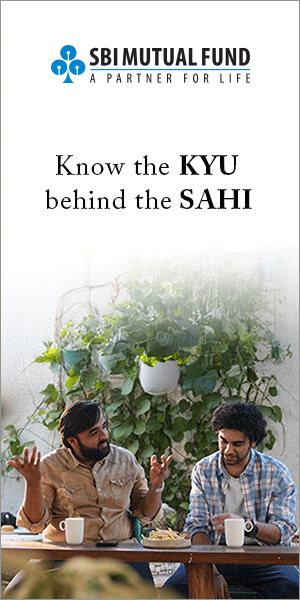Investing for the future of your children

For parents who want to save for their children’s education or marriage, mutual fund is the best investment option. Since children’s education or marriage is a long term financial objective, like retirement planning, it is important to note the following from a financial planning perspective:
- Equity as an asset class provides the best returns over a long time horizon. As such equity oriented mutual funds are the best investment options for long term objectives
- Investors need to maintain a long term outlook and not be influenced by the short term volatility of NAVs. Lot of mutual fund investors redeemed their units or discontinued their SIPs, and switched their investments to bank FDs when there was sharp downturn in the markets in 2008 – 2009. If they had continued to remain invested in mutual funds, the net worth of their investments would have been much higher today. The chart below shows annualized returns for various equity oriented mutual fund categories from 2009 to 2014 (based on Feb 20 NAVs). Surely bank FDs would not have been able to match the returns shown below.
- Investors need to have a disciplined approach to investing for children’s education. Systematic investment plans (SIPs) ensure that you stay on track with your investments
- Investors should always consider the tax aspect and evaluate investment choices based on post tax returns. Interest in Bank FDs is treated as income and subject to income tax. Whereas for mutual funds, as long as you are invested, there is no taxation. On redemption, long term (over one year) capital gains for equity funds oriented (more than 65% exposure to equities) are tax exempt. While capital gains from debt oriented funds are subject to taxation, investors can avail of indexation benefit. Over a long period of time with indexation, investors can reduce taxes close to zero. Further, dividends from equity funds are tax free.
- Investors should assess their risk profile in making investment choices. Investors who are only two or three years away from their child’s goal should avoid equities. Mutual funds offer lot of investment options for investors with various risk profiles. There are both equity oriented and debt oriented child plans.

Child Plans offered by Mutual Funds
Mutual fund houses like HDFC, ICICI Prudential, UTI, Templeton, Tata and SBI offer a variety of choices as far child plans are concerned. Child plans also help earmark funds for specific goals, dividing the portfolio into several categories. This makes it simpler for a parent to monitor the investment for a particular goal. This segregation is important because each goal has a different time frame and, therefore, requires a different investment mix. For example, your child’s college or higher education may only be two or three years away and while his or her marriage may be five or six years away, prompting different investment choices for these two goals. These funds have exit loads, as high as 4% and the minimum period can extend up to 5 years. In a way, this is beneficial for investors because it forces them to remain invested for the long term, and thereby create wealth for their children’s goals.
Equity Oriented Child Plans
The chart below shows annualized returns for equity oriented child plans over a one, three and five year time periods (based on Feb 20 NAVs)

HDFC Children's Gift Fund Investment Plan:
This scheme was launched in 2001 and has over Rs 408 crores assets under management (AUM). This scheme is clearly the best performing amongst the child plans. It is predominantly equity oriented in its portfolio mix. Equities comprise nearly 71% of the portfolio, while debt and cash equivalents account for 13% and 16% respectivelyICICI Prudential Child Care Plan - Gift Plan:
This scheme was launched in 2001 and has built an AUM base of nearly Rs 188 crores. The scheme has an equity bias, with equities accounting for 72% of the portfolio mix. Debt comprises 18% of the mix and the balance is comprised of cash equivalents and other instrumentsTempleton (I) Children’s Asset Plan:
This is one of the oldest schemes, launched in 1998 with Rs 8 crores of AUM. In terms of portfolio mix, equities account for 65%, debt 30% and cash equivalents 5% of the portfolio holdingsUTI Children’s Career Plan Advantage Fund:
This scheme launched in 2004, has nearly Rs 83 crores AUM. It has largely an equity bias, with equities comprising 93% of the portfolio mix. Debt accounts for 4% and cash equivalents 3% of the portfolio holdings
Debt Oriented Child Plans
In addition to equity oriented child plans, debt oriented child plans are also available in the market. These plans have a more conservative portfolio mix and are suitable for investors with moderate risk profiles and time horizons. The chart below shows annualized returns for equity oriented child plans over a one, three and five year time periods (based on Feb 20 NAVs)

ICICI Prudential Child Care Plan - Study Plan:
This scheme was launched in 2001 and has Rs 36 crores of AUM. The portfolio mix is weighted to debt, with equities comprising only 24%, debt 73% and cash equivalents 3%. The quality of the debt portfolio is good, comprising of G-Secs and highly rated corporate bondsTata Young Citizens Fund:
This is one of the oldest child plans, launched in 1995. It has nearly Rs 175 crores of AUM. This fund has a slightly higher allocation to equities compared to its peers. Equity accounts for 49% of the portfolio mix, while fixed income securities (debt and money market) comprise about 44% of portfolio value. The balance is in cash equivalents.HDFC Children's Gift Fund Savings Plan:
This scheme, launched in 2001, has Rs 73 crores of AUM. In terms of portfolio composition debt is 51%, equity 19% and cash equivalents in close to 30%. The quality of the debt portfolio is good, comprising of G-Secs and highly rated corporate bondsSBI Magnum Children Benefit Plan:
Thus scheme was launched in 2002 and has AUM base on Rs 23 crores. In terms of portfolio mix, equity comprises 24%, while fixed income securities (debt and money market) 74% of the portfolio, with debt accounting for 48%. The balance is in cash equivalents. The quality of the debt portfolio is good, comprising of G-Secs and highly rated corporate bonds
Investors invested in equity oriented child plan (e.g. HDFC Children's Gift Fund Investment Plan) can switch to debt oriented plan (e.g. HDFC Children's Gift Fund Savings Plan) as they start approaching their children’s education or marriage goals.
SIP Returns since inception from top performing equity oriented Child Plans
The chart below shows returns as on Feb 24 2014 (NAVof 58.7) of Rs 5000 monthly SIP in HDFC Children’s Fund - Investment Plan, for respective years since inception (in Mar 2001). The SIP date has been assumed to first working day of the month. The amounts are shown in Rs lakhs.

The chart above shows that a monthly SIP of Rs 5000 started on the first working day of the month since inception in Mar 2001 in the fund would have grown to nearly Rs 22 lakhs, while the investor would have invested in total only Rs 7.6 lakhs. Similarly a monthly SIP of Rs 5000 in ICICI Prudential since inception in Aug 2001 would have grown to nearly Rs 15.5 lakhs with in an investment of only Rs 7.4 lakhs (see chart below)

Conclusion
The performance of child plans is really a mixed bag. Since your children’s education and marriage are among the most important goals of your lives, you should be very selective in choosing the right child plan. At the end of the day wealth creation to meet your child’s need is the fundamental objective. As such, for the savvy investor, investing in the right diversified equity or balanced funds may be a smarter strategy because you have a vast array of choices amongst funds that have delivered better risk adjusted returns than the child plans (in fact top performing large cap funds have delivered a few percentage points higher returns than the child plans).
However, there is a tendency amongst normal retail investors to react sharply or unfavourably in volatile markets either by stopping the SIPs or redeeming the funds. Since Child plan has a lock-in period and high exit load it forces the investor to stay disciplined. Therefore, you should consult with your financial advisor in choosing an appropriate plan to meet your children’s goals while judging your own risk taking appetite.
Queries
-
What is the benefit of mutual fund STP
Aug 29, 2019
-
How much to invest to meet target amount of Rs 2 Crores
Aug 26, 2019
-
Can I achieve my financial goals with my current mutual fund investments
Aug 24, 2019
-
Can you tell me return of various indices
Aug 19, 2019
-
What would be the post tax return on different investments
Aug 18, 2019
-
Which Principal Mutual Fund scheme will be suitable for my retirement corpus
Aug 16, 2019
-
What is the minimum holding period for availing NCD interest
Aug 4, 2019
Top Performing Mutual Funds
Recommended Reading
Fund News
-
Groww Mutual Fund launches Groww Nifty Smallcap 250 ETF
Oct 13, 2025 by Advisorkhoj Team
-
Motilal Oswal Mutual Fund launches Motilal Oswal Consumption Fund
Oct 6, 2025 by Advisorkhoj Team
-
Kotak Mahindra Mutual Fund launches Kotak Gold Silver Passive FOF
Oct 6, 2025 by Advisorkhoj Team
-
Invesco Mutual Fund launches Invesco India Consumption Fund
Oct 6, 2025 by Advisorkhoj Team
-
ICICI Prudential Mutual Fund launches ICICI Prudential Conglomerate Fund
Oct 6, 2025 by Advisorkhoj Team














